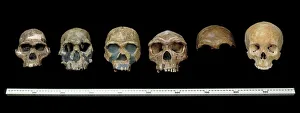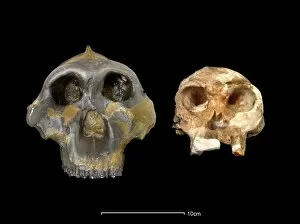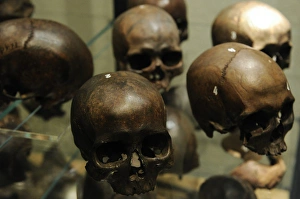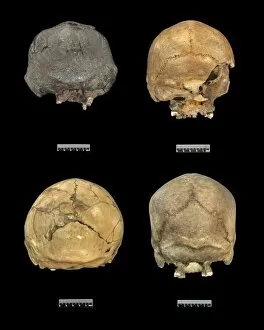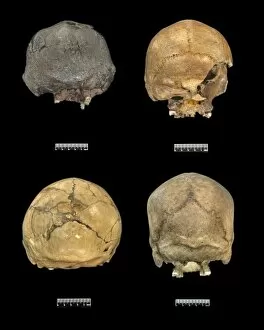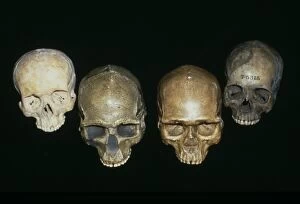Crania Collection
"Crania: Unveiling the Story of Human Evolution" Step into the fascinating world of crania, where ancient skulls hold the secrets to our evolutionary past
All Professionally Made to Order for Quick Shipping
"Crania: Unveiling the Story of Human Evolution" Step into the fascinating world of crania, where ancient skulls hold the secrets to our evolutionary past. Hominid crania, such as Homo sp. Skulls C016 / 5933, offer a glimpse into the diverse species that once roamed the Earth. In communal graves, not only were bodies laid to rest, but also precious treasures like jewellery. These burial sites tell tales of human connections and rituals that spanned across generations. Imagine the stories behind each buried adornment. The Pictorial Museum of Animated Nature takes us on a visual journey through time with its intricate engravings. Each page unveils another chapter in the evolution and offers a window into our ancestors' lives. Comparisons between Homo sapiens skull C016 / 5934 and other Homo sp. Skulls reveal subtle variations within our own species. These differences hint at unique adaptations and cultural practices that shaped different populations throughout history. Australopithecus boisei (OH5) & Homo habilis (OH24) crania provide insights into early hominids' physical characteristics and cognitive abilities. Studying these ancient remains allows us to piece together how our ancestors lived and interacted with their environment. The juxtaposition of Homo sapiens (Predmosti) & Homo neanderthalensis (La Ferrass) crania highlights both similarities and distinctions between these closely related species. It sparks questions about interbreeding or competition for resources during prehistoric times. Proconsul, Homo heidelbergensis & Homo neanderthalensis cranial comparisons shed light on significant milestones in human evolution – from ape-like ancestors to archaic humans who eventually gave rise to modern humans like us today. Through meticulous examination, scientists unravel mysteries hidden within each crevice of Homo sapiens crania comparison specimens. This detailed analysis helps reconstruct ancestral lineages while deepening our understanding of the complex tapestry of human evolution.

